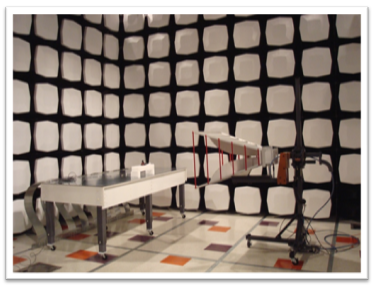
Component-Level Characterization for System-Level EMC Simulations
With the proliferation of high-speed electronics and wireless devices in today"s automobiles, full-vehicle electromagnetic simulations are becoming an important part of the automotive design process. Full-vehicle simulations require complete and accurate models for the various electronic components found in the vehicle. Although automotive electronic components are currently subjected to a variety of electromagnetic measurements designed to ensure electromagnetic compatibility, existing measurement procedures do not yield sufficient information about the electromagnetic behavior of components to be useful in full-vehicle simulations. Because of this, there is very little correlation between component-level EMC test data and system-level EMC performance. 
The goal of this project is to identify specific component-level test procedures that will yield the information necessary to perform system-level EMC simulations. The basic approach is to divide all coupling into four categories: conducted, near-field electric, near-field magnetic and radiated. Four independent tests are done on each component to identify its ability to couple to a system through each of these mechanisms. Source models derived from component-level tests are incorporated into full-wave or expert system models of the entire vehicle. By fully characterizing the components as sources independent of their environment, it is possible to accurately predict their behavior in an automotive system. Preliminary results indicate that test procedures employing low/high-impedance artificial networks, hybrid TEM cells, and true component-level radiated emissions measurements are capable of providing all of the component-level information required for system-level EM emissions simulations.
Publications
PresentationsPCB Radiation Mechanisms: Using
Component-Level Measurements to
Determine System-Level Radiated Emissions |
|
|